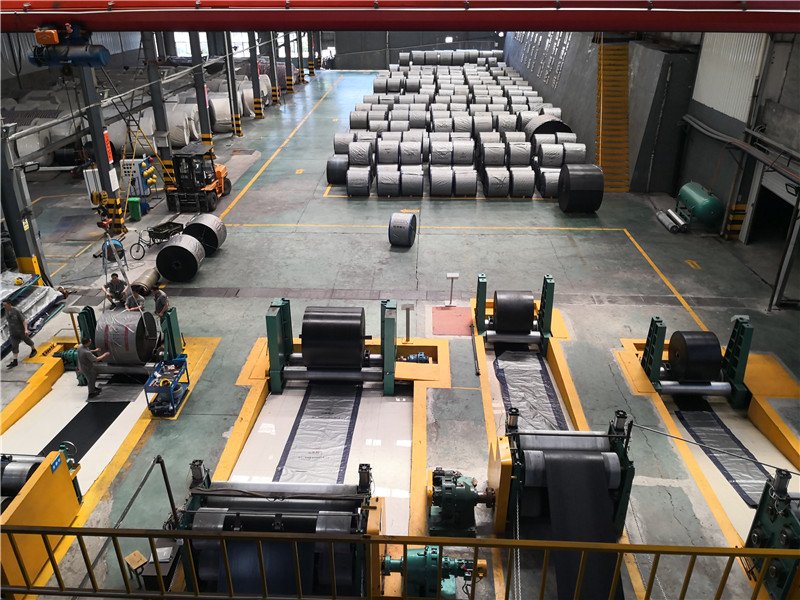



Basic knowledge of rubber technology
1、 Explanation of terms
1. Rubber: it is an organic polymer elastic compound. Rubber is generally divided into natural rubber and synthetic rubber according to the raw materials. Different rubber raw materials are vulcanized to make rubber linear polymer structure become body polymer to obtain various thermoplastic, elastic, malleable and rigid properties.
Simply speaking, the equipment of rubber industry is the automatic processing flow of cleaning, crushing, granulation, vulcanization and modification of various raw materials. Have:
(1) Long chain polymer (molecular weight in tens of thousands to hundreds of thousands)
(2) The movement of each link of molecular chain is active.
(3) The molecular chain is easy to rotate and curl.
(4) The intermolecular force is small.
(5) Normal temperature is amorphous.
(6) It can be crosslinked between molecules, and has necessary properties before and after crosslinking.
2. Vulcanization: under certain conditions, the crosslinking process of rubber molecules from linear structure to network structure is called vulcanization.
3. aging:
In the process of forming, processing, long-term storage and use of rubber products, due to the effects of oxygen, ozone, variable metal ions and other chemical substances, mechanical stress, light, high-energy radiation and other physical effects and erosion of fungi, insects and other organisms, rubber products will gradually become soft, sticky, hard, brittle or cracked, physical properties will be reduced, which is called aging.
4. scorch:
In the process of processing, operation and storage before vulcanization, the heat or high temperature caused by mechanical action causes early vulcanization of the rubber material, which leads to the decrease of plasticity and makes subsequent operation difficult. This phenomenon is scorch or early vulcanization.
5. Three elements of vulcanization:
Namely: curing time, curing temperature and curing pressure are called three elements of vulcanization.
2、 The function of the three elements of vulcanization in the vulcanization process and the relationship between them:
1. Each stage of vulcanization:
From the whole curing time, it can be divided into four stages, namely: curing induction stage, hot sulfur stage, positive sulfur stage and over sulfur stage.
1.1 curing induction stage (scorch stage)
In this stage, the crosslinking has not yet started, and the rubber has good fluidity in the mold cavity. The length of this stage determines the scorch and operation safety of the rubber.
From the end of this stage, the rubber starts to harden and lose its fluidity. If it is in molding vulcanization, the rubber stops flowing in the mold. According to the different additives used, this stage can be long or short.
1.2 hot vulcanization stage
After the induction stage, the crosslinking starts at a certain speed. The initial crosslinking process is relatively low, and the properties are also relatively low. But at the later stage, the tensile strength and elasticity of the vulcanizate can not reach the ideal level, but at this time, the tear resistance and dynamic cracking properties are higher than the corresponding values of the positive vulcanization stage.
1.3 positive vulcanization stage
At this stage, the physical and mechanical properties of vulcanizates reach or approach to the best point or the best comprehensive balance between them. The temperature and time taken in this stage are positive curing temperature and time, which are collectively called positive curing conditions.
1.4 sulfur stage
After the positive vulcanization stage, the further vulcanization will enter the persulfurization stage. For general rubber, at the beginning of this stage, all physical properties are basically stable, i.e. the vulcanization flat period. After the flat period, it is the over sulfur stage. In this stage, there will be two situations: A: natural rubber "recovery". b: Most synthetic adhesives (except butyl) harden.
2. Three elements of vulcanization
2.1 curing temperature: temperature is one of the most important control conditions in rubber curing process. The curing temperature of rubber is generally controlled in the range of 140 ℃ - 150 ℃ at the beginning of development. However, in order to improve the production efficiency and shorten the curing time, the temperature is now controlled between 180 ± 5 ℃.
2.2 the relationship between curing temperature and curing time is as follows:
Curing temperature (℃) 130 140 150 160 170
Curing time (min) 30 15 7.5 3.75 1.8
From the above situation, the curing time will be shortened by half when the temperature rises by 10 ℃, but it is also affected by the following factors:
Rubber is a bad heat conductor, so for thick products, it is difficult to use high temperature to make the inner and outer layer of rubber reach the flat range at the same time.
2.3 the high temperature resistance of all kinds of rubber varies (for example, natural rubber needs to be vulcanized at low temperature and for a long time). The increase of vulcanization temperature to a certain extent will affect the rubber performance more or less.
2.4 high temperature will also damage the fiber in rubber products, which will reduce the strength of textile. For example, if the cloth clamping product is heated continuously at 240 ℃ for 4 hours, the cloth clamping will be completely damaged. Therefore, when increasing and selecting the curing temperature, the rubber type, curing system, curing process method and product structure should be considered.
3. Curing pressure
It is an important condition of rubber vulcanization and plays an important role in the quality of finished products. The limit pressure of various compressors in this part: 21MPa for Taiwan 200t (including vacuum); 18.6mpa for Huzhou 150t; 20MPa for Huzhou 100t.
3.1 the vulcanization pressure can play the following roles when the product is vulcanized:
3.1.1 improve the compactness of the compound and remove the bubbles;
3.1.2 promote the flow of rubber in the mold cavity and make it fill the mold cavity quickly;
In a word, the vulcanization pressure plays an important role in the product quality, but the effect on the vulcanization speed is very small.
